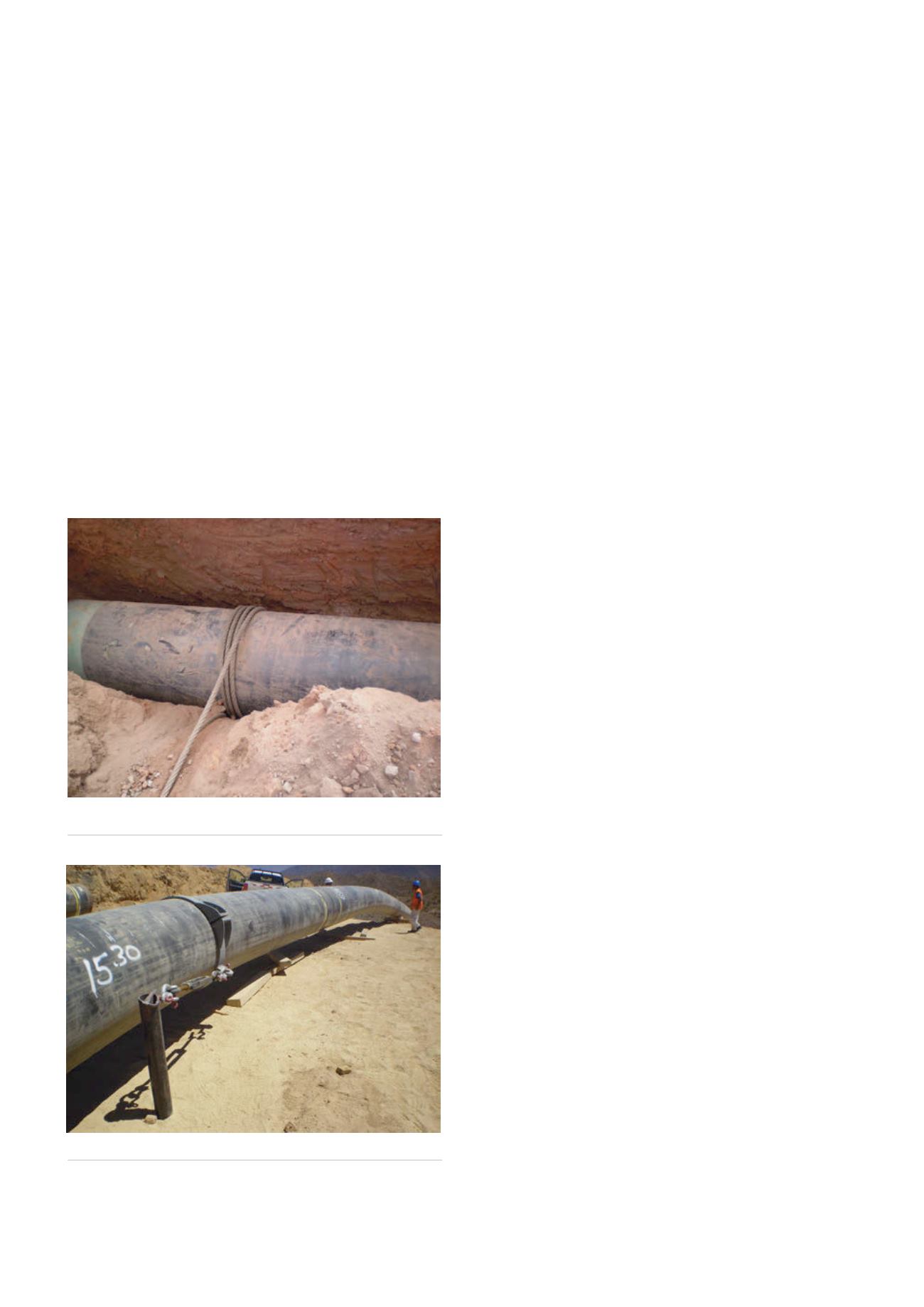
management staff. Each colour defines the management’s
specific instructions to drivers and operators.
Maps are distributed to all project drivers. The
significance of colour coding on the project map is
explained to all drivers and operators at their orientation.
The different colours are associated with mandatory
compliance to specific instructions, such as:
)
)
Access is denied to vehicles at all times on red slopes.
)
)
On yellow slopes, in deteriorating weather conditions,
such as reduced visibility (
<
20 m, rain, snow, frost or
ice), passage is restricted to off-road authorised and
project certified trained drivers and permitted only
if the slope is padded with gravel and permission
is granted by the driver or operators’ immediate
supervisor.
)
)
All operation of heavy equipment on yellow, red,
and blue slopes is permitted by project authorised,
competent and experienced operators, only under the
direct supervision of their foreman.
)
)
Operation of heavy equipment on red and blue slopes
is undertaken under the additional control of a permit
to work signed off by the project superintendent,
requiring for example: dead man winch tractors
supporting equipment on winch lines and/or prepared
horizontal work platforms.
Safe operation
Some safe rules of thumb for operation of heavy
equipment on slopes:
)
)
Safe operation on steep and extreme slopes may
require strict attention to fluid level requirement. The
maximum fore and aft slope on which some tractors
will have acceptable lubrication is 45° slope.
)
)
Working on softer soil conditions and working on
slopes can greatly reduce a side boom’s load capacity.
)
)
Those side booms facing the greatest risk on slopes are
the front-end bending, set-up, prep and test support
tractors carrying single joints, prep machines and test
heads.
)
)
Side booms should be equipped with short reach
booms for work on steep slopes.
)
)
Reduce the speed of travel on slopes – at higher
speeds, inertia forces tend to make the tractor less
stable.
)
)
Roughness of terrain or surface – compensation should
be made where the terrain or surface is uneven.
)
)
Nature of surface – disturbed or backfilled soil may
give way with the weight of the tractor. Rocky surfaces
may promote side slipping of tractor.
)
)
Parking equipment on hills – set parking brake lever;
turn sideways to slope; dozers drop blade, dig in corner
bit, side booms park with counterweights up-slope.
)
)
When there is 5 in. or more of frost in the ground, a
tractor may lose traction and slide off the ROW out
of control. The grouser shoes will require corking –
application of ice lugs.
)
)
Track slippage due to excessive loads may cause the
downhill track to ‘dig in’, increasing angle of tractor.
)
)
Implements hitched to the drawbar decreases weight
on the uphill track.
)
)
Height of hitch on tractor – when a high draw bar is
used the tractor is less stable than with a standard
drawbar.
)
)
Side booms working as single units on side hills should
be operated with counterweights up hill to maintain
stability, which keeps the centre of gravity (C of G)
plumb line falling inside the tracks.
)
)
As the boom overhang increases, the tractor becomes
less stable.
Figure 5.
Water filled pipe joint serving as an anchor for winch
tractor or pipe section on an extreme slope.
Figure 6.
Pipe section secured on steep slope.
164
World Pipelines
/
AUGUST 2015


